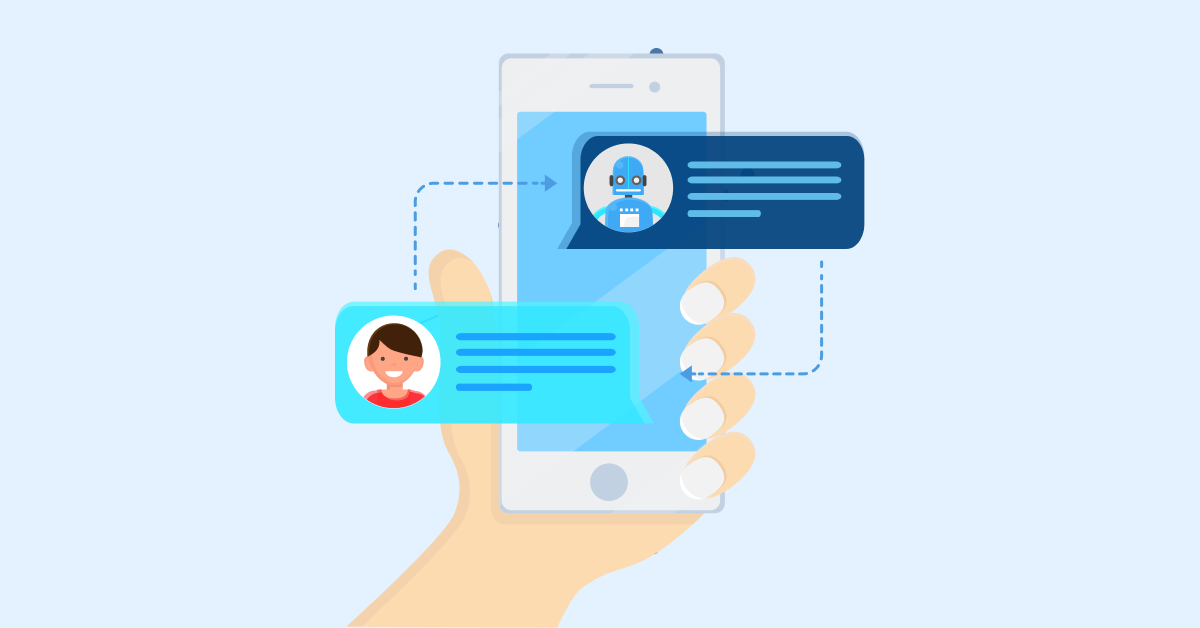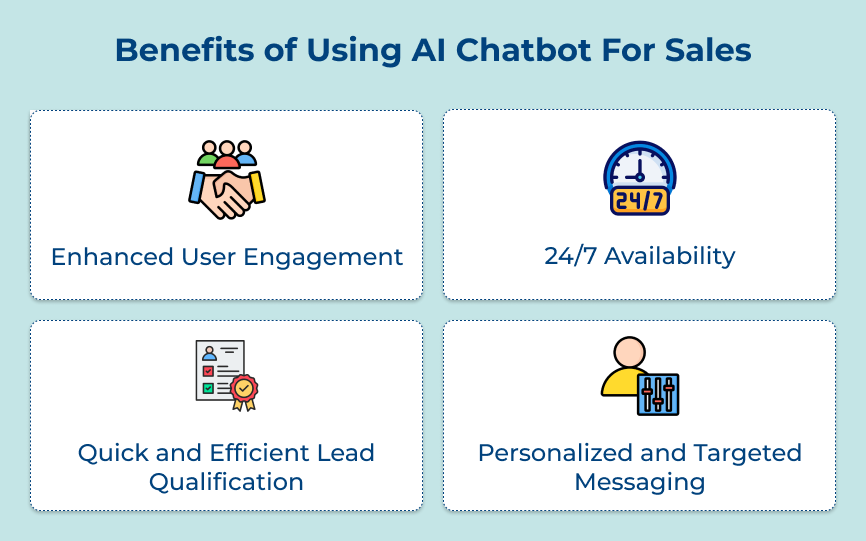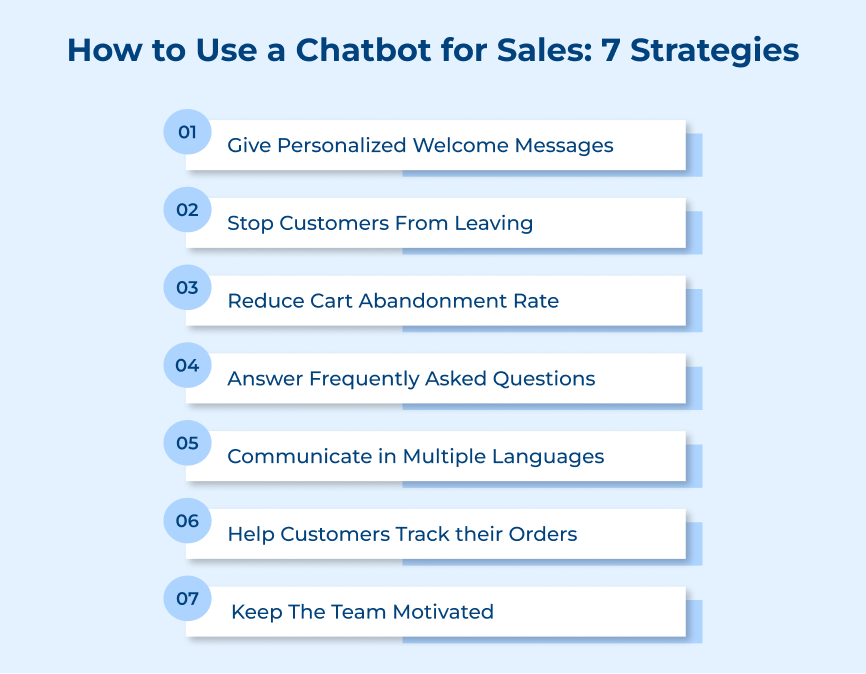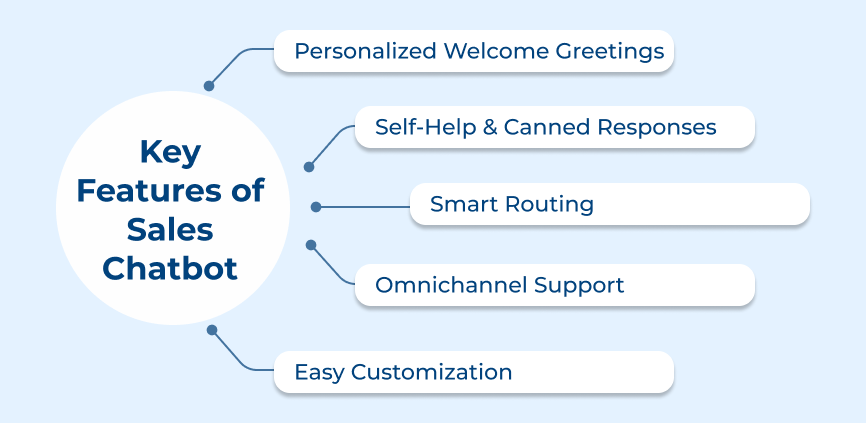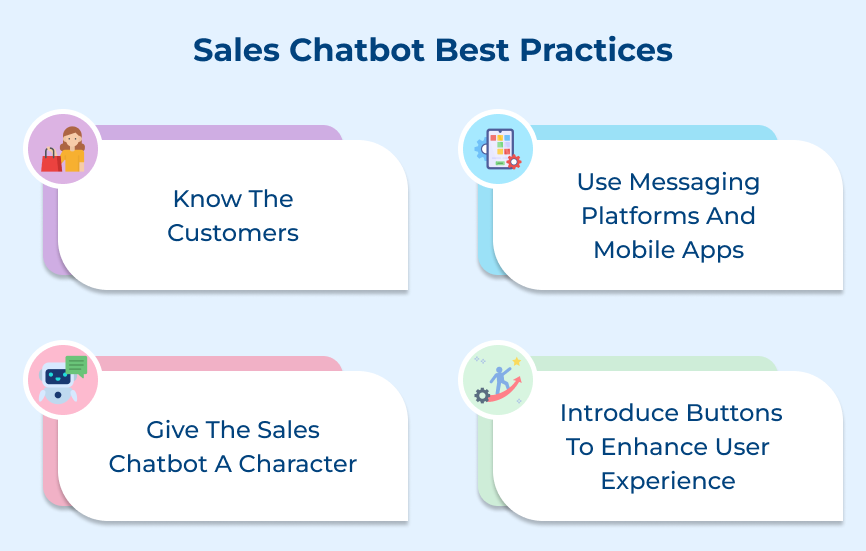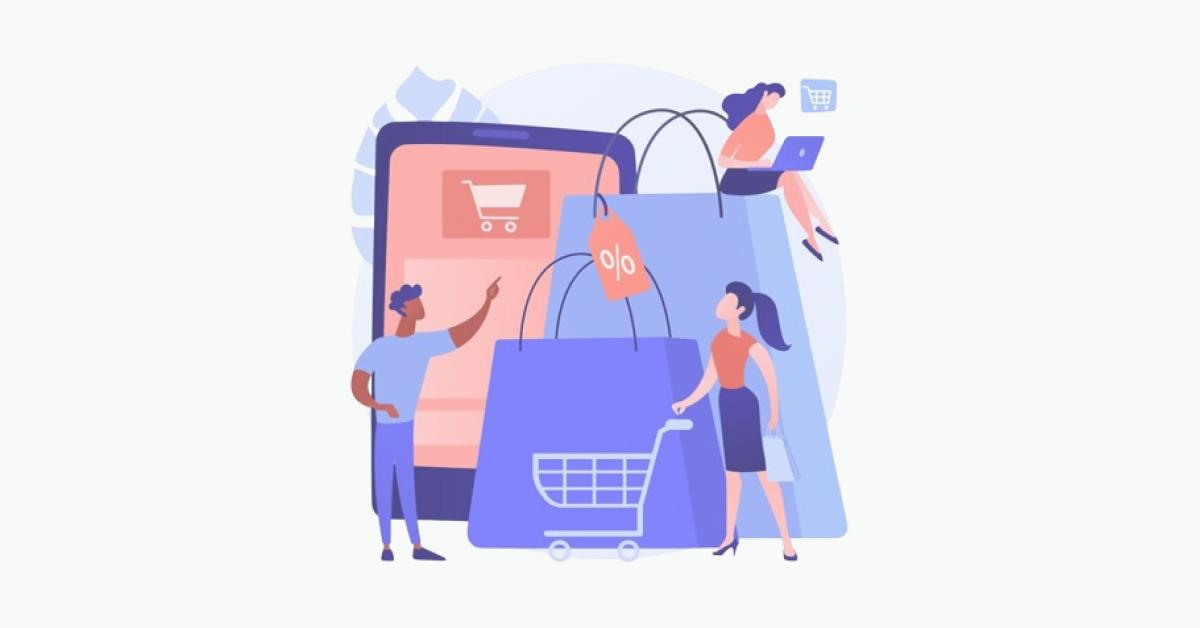1. Give Personalized Welcome Messages
Giving personalized welcome messages is an effective strategy to use with sales chatbots. When a customer interacts with a chatbot and receives a warm personalized welcome message, they are more likely to feel connected to the brand. It can significantly improve customer satisfaction and increase the chances of converting leads into sales.
Imagine a customer visits a clothing website and starts a conversation with the chatbot. Instead of receiving a generic greeting, the chatbot welcomes them with a personalized message such as “Welcome, Sarah! Looking for trendy outfits to rock this season? Let me assist you in finding the perfect ensemble.” It not only grabs the customer’s attention but also makes them feel valued as an individual.
Ways to implement:
- Businesses can gather customer data during their interactions and use it to tailor their welcome messages.
- Chatbots can be programmed to ask customers for their preferences or interests at the beginning of the conversation to provide more targeted assistance.
2. Stop Customers from Leaving
Losing customers can have a significant impact on the bottom line, making it crucial to implement effective strategies to retain them. One powerful strategy to achieve it is by utilizing a sales chatbot. The ability to mimic human conversation enables chatbots to offer a seamless and efficient customer experience, eventually preventing them from leaving.
Imagine a customer is experiencing difficulties navigating a website to make a purchase. Instead of getting frustrated and closing the tab, an AI chatbot for sales can step in to provide step-by-step guidance, ensuring a smooth transaction. The proactive approach not only prevents the customer from leaving but also creates a positive impression and increases the likelihood of repeat business.
Ways to implement:
- Initiate customer conversations to offer assistance or provide relevant information before they even need to ask.
- Ensure the chatbot is available round-the-clock to address customer concerns and inquiries, avoiding any delays in response time.
3. Reduce Cart Abandonment Rate
Cart abandonment is a challenge that many e-commerce businesses face – nearly 70% of ecommerce carts get abandoned. It refers to the situation where a customer adds items to their online shopping cart but leaves the website without completing the purchase. When a potential buyer is contemplating their purchase, having a chatbot readily available can address any concerns they may have.
Consider a customer who’s unsure about the sizing of a particular product. Instead of leaving the website, they can interact with the sales chatbot which can provide accurate size measurements and recommend the best fit. Personalized assistance helps build trust and confidence in the buyer, increasing the chances of them completing the purchase.
Ways to implement:
- Initiate conversations with visitors to the website, offering assistance in finding products, answering questions and resolving concerns.
- Utilize the chatbot’s algorithms to suggest related items based on the customer’s preferences, increasing the chances of upselling or cross-selling.
4. Answer Frequently Asked Questions
Answering frequently asked questions (FAQs) is a crucial strategy when it comes to utilizing AI chatbots for sales effectively. It involves programming chatbots to provide immediate and accurate responses to common queries from customers. The chatbots save time for both customers and businesses by providing accurate answers to frequently asked questions, ensuring an efficient customer journey.
Imagine a customer browsing an e-commerce website and having questions about shipping costs or return policies. Instead of scrolling through multiple web pages or waiting for a customer service representative, a sales chatbot could provide instant responses. The approach eliminates any frustration or inconvenience.
Ways to implement:
- Businesses need to identify the most common questions customers ask and create a comprehensive list of FAQs.
- Regularly update the chatbot’s database with new questions and answers based on customer feedback.
5. Communicate in Multiple Languages
Using a chatbot for sales to communicate in multiple languages can be an effective strategy to expand the reach and engage with a wider customer base. Employing the best sales chatbot allows businesses to communicate in multiple languages. It ensures customers from different regions can easily interact with the brand, ask questions and receive assistance in their native language.
A company that operates in multiple countries may implement a sales chatbot capable of understanding and responding to customer inquiries in different languages. It can provide product information, answer frequently asked questions and even facilitate the purchase process in multiple languages. The approach will allow the company to cater to a diverse customer base and create a seamless customer experience across different regions.
Ways to implement:
- Utilizing natural language processing techniques can further enhance the chatbot’s ability to interpret and respond accurately in different languages.
- Hire multilingual customer service representatives to operate the chatbot and engage with customers in their preferred language.
6. Help Customers Track their Orders
Sales bot allows customers to easily track their orders and receive real-time updates, leading to improved customer experiences. It eliminates the need for customers to wait on hold or continually check their emails for updates. Customers can simply engage in a conversation, provide their order details and receive instant updates on the status of their orders.
An example of how the same strategy can be implemented is by integrating a sales assistant chatbot into a company’s website or mobile app. The chatbot can be programmed to recognize order-related keywords and prompts to provide relevant information to the customers. It can also proactively notify customers about any delays or changes in their orders, ensuring they are always well-informed.
Ways to implement:
- The AI chatbot for sales can be integrated with a company’s CRM system to retrieve real-time data on order progress.
- The chatbot can be programmed to provide personalized recommendations or cross-selling opportunities based on customers’ order history.
7. Keep the Team Motivated
Keeping the departmental teams motivated is critical for achieving success in all types of industries. One efficient strategy that helps this endeavor is utilizing a sales chatbot for sales and marketing. It can handle repetitive tasks for businesses, such as answering frequently asked questions and providing product recommendations. The approach frees up your team’s energy to focus on more complex and valuable tasks.
Let’s say you have a team of sales representatives who spend a significant amount of time answering customer queries regarding product specifications. Implementing a sales chatbot will ensure all the queries are automatically handled by it, allowing the teams to spend more time building relationships with customers and closing deals.
Pro tips:
- Regularly update the chatbot’s knowledge base to ensure accurate and up-to-date information.
- Encourage the team to collaborate with the chatbot, providing feedback and suggestions for improvement.
Key Features of Sales Chatbot
Following are the must-have features that make a sales chatbot not just a tool, but a powerful ally in your sales strategy.
